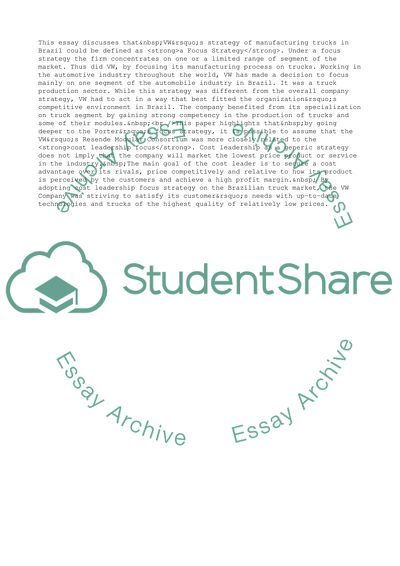Cite this document
(“The VW Resende Modular Consortium Essay Example | Topics and Well Written Essays - 3000 words - 1”, n.d.)
The VW Resende Modular Consortium Essay Example | Topics and Well Written Essays - 3000 words - 1. Retrieved from https://studentshare.org/management/1575873-global-supply-chain-management
The VW Resende Modular Consortium Essay Example | Topics and Well Written Essays - 3000 words - 1. Retrieved from https://studentshare.org/management/1575873-global-supply-chain-management
(The VW Resende Modular Consortium Essay Example | Topics and Well Written Essays - 3000 Words - 1)
The VW Resende Modular Consortium Essay Example | Topics and Well Written Essays - 3000 Words - 1. https://studentshare.org/management/1575873-global-supply-chain-management.
The VW Resende Modular Consortium Essay Example | Topics and Well Written Essays - 3000 Words - 1. https://studentshare.org/management/1575873-global-supply-chain-management.
“The VW Resende Modular Consortium Essay Example | Topics and Well Written Essays - 3000 Words - 1”, n.d. https://studentshare.org/management/1575873-global-supply-chain-management.


